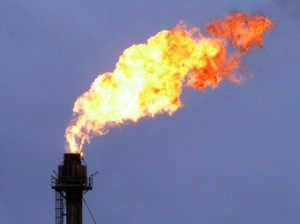 US natural gas advanced for a fifth consecutive day after rising on Monday to the highest since June amid weather forecasts pointing to below-average temperatures across most of the US.
US natural gas advanced for a fifth consecutive day after rising on Monday to the highest since June amid weather forecasts pointing to below-average temperatures across most of the US.
On the New York Mercantile Exchange, natural gas for delivery in January traded at $3.868 per million British thermal units at 13:31 GMT, up 0.64% on the day Prices held in range between days low of $3.842 and session high at $3.884, near Mondays six-month high of $3.893 per mBtu. The energy source was up 2.1% on weekly basis on Tuesday.
Natural gas continued its upward trend after forecasting models predicted temperatures to remain below average in the near-term in most of the US states through December 2nd. According to NatGasWeather.com, there is a chance of a strong storm during the period, ending on December 2nd. The storm will develop by merging two weather systems, one carrying blast of cold and swinging around the Midwest and the other coming from the South with bands of heavy rain and strong storms. The combined system will move fast by decreasing the temperatures in most of the locations on its way for less than 24 hours, after which it will disappear.
NatGasWeather.com predicts that this next blast seems sufficiently cold to lower temperatures by 15-20 degrees below normal average, along with forming snow in the colder front of the storm and pockets of rain and ice in the warmer zones. This implies that there will be a high heating demand during the active holiday weekend. The Northern states will be using a lot of their storage reserves, as the cold weather seems to encompass huge territories in the Northern part of the US, as well as parts of Midwest.
According to AccuWeather.com, the low in Chicago on December 6th will be 17 degrees Fahrenheit, beneath the average of 26, while readings in Houston will be 44 degrees Fahrenheit, 4 degrees below usual.
When cold weather is expected, natural gas surges as increased electricity demand to power air-conditioning calls for more supply of the fuel, which is used for a quarter of U.S. electricity generation. Above-average readings in the winter season have the opposite effect. Consumption usually picks up from November through March. According to the Energy Information Administration, power generation accounts for 32% of U.S. gas demand and 49% of U.S. households use the energy source for heating.
Natural gas was also well supported after the Energy Information Administration reported a larger-than-projected withdrawal in U.S. inventories in the week ended November 15, signaling robust demand as we enter the winter heating season. Stockpiles fell by 45 billion cubic feet compared to projections for a 38 billion withdrawal according to the median estimate of 21 analysts surveyed by Bloomberg. Last week’s decrease was above the five-year average decline of 2 billion cubic feet and a 36 billion withdrawal during the comparable period a year earlier.
Total gas held in U.S. underground storage hubs equaled 3.789 trillion cubic feet and were 2.3% above last year’s amount of 3.878 trillion. The surplus over the five-year average inventories narrowed to 0.4% from 1.5% a week earlier.
Inventories at the East Region declined by 31 billion cubic feet to 1.953 trillion and were 5.7% below the average of 2.071 trillion. Stockpiles in the Producing Region fell by 13 billion cubic feet to 1.284, 8.1% above the five-year average of 1.188 trillion.





